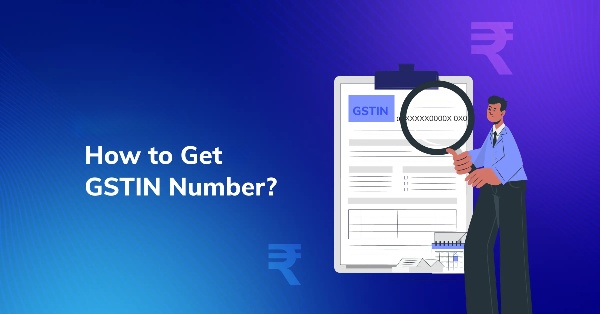university.nakul@gmail.com | Posted on
The Goods and Services Tax, commonly known as GST, is a single tax system that has been introduced in most countries of the world, including India, primarily to make it more efficient to collect tax on goods and services. In the context of India, the GST Identification Number, commonly known as GSTIN, is a special and unique 15-digit number that is given to those business entities that have registered themselves under this specific tax system. This number is of utmost importance for tax compliance, for allowing tax returns to be submitted, and for allowing businesses to avail credit for taxes already paid. Whether you are running a business presently or are just interested in getting a GST number, this guide will cover all the aspects involved, including the eligibility, process of obtaining it, and all the procedures that you will have to fulfill.

What’s a GST Number and Why Does It Matter?
Think of a GST number as your business’s tax ID under the GST setup. In India, if your yearly earnings cross a certain point usually ₹40 lakh for goods or ₹20 lakh for services you’ve got to have it. That limit can shift a bit in certain states, so it’s worth checking. With this number, you can collect GST from buyers, file your tax paperwork, and get back some of the tax you’ve paid on supplies. Skip it, and you’re stuck you can’t legally add GST to your prices or join the official supply chain. Plus, it gives your business a legit edge and lets you trade across state lines without a hitch.
Who Needs to Sign Up for GST?
Before diving into the process, figure out if you qualify. Here’s who has to get a GST number in India:
- Turnover Thresholds: If your total sales top ₹40 lakh (goods) or ₹20 lakh (services), you’re in. For some northeastern states, it’s lower ₹20 lakh or even ₹10 lakh.
- Cross-State Sellers: Moving goods or services between states? You need to register, no matter your earnings.
- Online Sellers: Running an e-commerce gig—like on Amazon—or managing such a platform? GST is non-negotiable.
- Temporary Vendors: Setting up shop for a short stint, like a festival stall? You’ll need a GST number too.
- Tax Credit Seekers: Want to offset taxes paid on supplies? Registration’s your ticket.
- Optional Signup: Even if you’re under the limit, you can join voluntarily to score GST perks.
If you’re outside India, peek at your local tax rules requirements can vary.
What You’ll Need to Apply
To kick things off, round up these essentials (based on India’s system tweak as needed elsewhere):
- ID Proof: Your PAN card if you’re solo, or for partners/directors if it’s a bigger outfit.
- Address Evidence: A utility bill, lease agreement, or tax receipt for where your business operates.
- Business Papers: Incorporation certificate, partnership agreement, or a shop license.
- Bank Info: A cancelled cheque or statement with your account and IFSC details.
- Photos: Passport-style shots of the key people involved.
- Permission Note: If someone’s filing for you, they’ll need a signed letter.
Make sure everything’s current and ready to scan.
How to Get Your GST Number, Step by Step
Here’s the rundown, using India’s GST site (www.gst.gov.in) as the example:
Step 1: Hit the GST Website
Head to the site, find “Services,” then “Registration,” and pick “New Registration.” Choose “Taxpayer” for a standard business.
Step 2: Start with Part A
Plug in your PAN, phone, and email in Part A of Form GST REG-01. They’ll send an OTP to verify both. Once done, you’ll snag a Temporary Reference Number (TRN).
Step 3: Tackle Part B
Use that TRN to log in and fill out Part B. Add your business name, type (sole owner, partnership, etc.), location, and bank details. Upload your docs here too.
Step 4: Check and Send
Go over everything, then submit with an e-signature (DSC for companies) or an OTP. You’ll get an Application Reference Number (ARN) to keep tabs on it.
Step 5: Officer Review
A GST official will look it over. If something’s off, they’ll ping you within a week to fix it.
Step 6: Get Your GSTIN
If all’s good—usually in 3-7 days—you’ll get your GSTIN by email and text. Grab the certificate online too.
After You’re In
Once you’ve got your number:
- Show It Off: Put your GSTIN on invoices and signs.
- File Regularly: Send in returns monthly, quarterly, or yearly—depending on your setup.
- Track Everything: Keep solid records of sales, buys, and credits.
- Be Ready: Tax folks might check in now and then.
Troubleshooting Tips
- Slow Approval: Clear, correct docs speed things up.
- Site Glitches: Stick to Chrome and a steady connection.
- Denials: Double-check your eligibility and paperwork.
Wrapping Up
Nailing down a GST number isn’t tough if you take it step by step and meet the rules. It’s a game-changer for staying legal and growing your business, whether you’re a small shop or a big player. Not sure about something? Chat with an accountant or hit up your local tax site for specifics. Get moving now and set your business up right!
0
0 Comment
